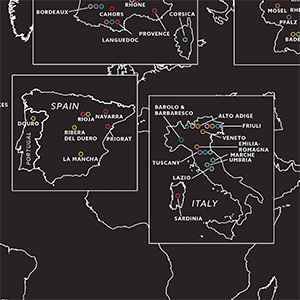Years ago, I was seated at a fancy dinner for journalists who cover wine. As the sommelier poured me a glass, a woman across the table opined about “big, beautiful” Burgundy wines, and then shared in horror a practice she’d observed abroad while traveling in China: “They’re mixing them with Coca-Cola.”
Although not a Chinese drink, the woman was referring to a concept that has a massive following in Spain called kalimotxo.
Kalimotxo (pronounced and sometimes styled calimocho), is a two-ingredient “cocktail” consisting of a one-to-one ratio of red wine and Coke over ice. Originating in Spain in the 1920s, the sweet and easy drink is experiencing somewhat of a resurgence in the United States, with bartenders and wine experts introducing versions of the drink on menus anywhere from Pennsylvania to Texas.
Rand Egbert, general manager and co-founder of a bar in Austin, Texas, first encountered kalimotxo in Spain’s Basque region, while living with a friend’s family in Valencia. It would eventually inspire the name for his bar: Kalimotxo.
Being immersed in the local culture meant eating and drinking like a local, Egbert says. “Most days in the early evening, my friends and I would hang out in the beautiful old plazas in town — drinking, eating chips, olives, and cured meats,” Egbert says. “It was during this time that my friends and I would often drink kalimotxo. It was a perfect drink for that time of day, with snacks.”
If not kalimotxo, his friends would drink Tinto de Verano. “[It’s] the same cocktail, but with lemon or orange Fanta instead of Coca-Cola,” says Egbert, who later earned an advanced WSET certification.
Kalimotxo’s ‘Ugly’ Beginnings
“Kalimotxo has been enjoyed in Spain since the 1920s but it didn’t become popular and find its current namesake until the 1970s, when it was poured at a festival in Getxo, Spain [in] Basque country,” Egbert says. Like many century-old concoctions, the idea of mixing wine with Coca-Cola was that the syrupy sweetness of Coke would mask flaws in the wine. Flaws in the wine could stem from poor storage and being exposed to the air (oxidized), overheated, or simply just not being made very well.
“The event organizers had thousands of liters of wine with an unpleasant taste, and they needed a way to salvage them. To save the event they decided to serve it with Coca-Cola, and the crowd loved it,” Egbert says. The drink was named after one of the festival organizers called Kalimero, or “Kali” for short. “He was known as an unattractive man, and so they added the Basque word for ugly, ‘motxo,’” Egbert says. “Thus, ‘kalimotxo’ was born.”
Modern Twists on Kalimotxo
Fans of kalimotxo appreciate its laid-back simplicity and flavor profile — Coca-Cola-sweet with a bit of acidity from red wine for balance — as well as its low-alcohol drinkability.
“Low-ABV drinks have really grown in popularity in the past couple years, for good reason: They are refreshing, full of flavor, and you can have a few of them with no problem,” Egbert says.
Nicole Battle, front of house manager at Pittsburgh’s DiAnoia’s Eatery, also tasted her first kalimotxo abroad. Eventually, a Kalimotxo-inspired cocktail would make its way to the menu at DiAnoia’s Eatery, a traditional Italian restaurant. “I wasn’t super into the idea of the drink but I thought to myself, when in Spain,” Battle says. At DiAnoia’s, Battle’s version adds an Italian twist: Fernet Branca.
“The combination of Fernet, vanilla, coffee, and creme de cacao is similar to cola,” she explains. To add carbonation, she chose Gragano Vino, a sparkling red wine similar to a traditional Lambrusco.
Meanwhile, Egbert embraces the Texan heat for his “twist” — frozen kalimotxo. He chose this format “because it is fun and hot here in Texas,” he says. Of course, it’s not as easy as it looks. “To serve it frozen, you have to use Coke syrup to get the right texture and flavor,” he says, adding, “When making frozen drinks, you have to have the right sugar content, or the drink can turn to ice. Our frozen version is great, because it is not too sweet, and you can taste both of the main ingredients.”
As for Battle, the appeal is straightforward: “Who knew something so simple and weird could be so wonderfully refreshing?”
The Bitter Temptation Recipe
Developed by: Nicole Battle
Photos: Courtesy of DiAnoia’s Eatery
1 ounce cold brew coffee
¾ ounce Fernet Branca
¾ ounce vanilla syrup
½ ounce Tempus Fugit Creme de Cacao
1 ounce Gragnano Vino
1. Mix all ingredients except Gragnano (or sparkling red wine) in a mixing vessel.
2. Strain over a 2-inch ice cube.
3. Float the wine on top.
